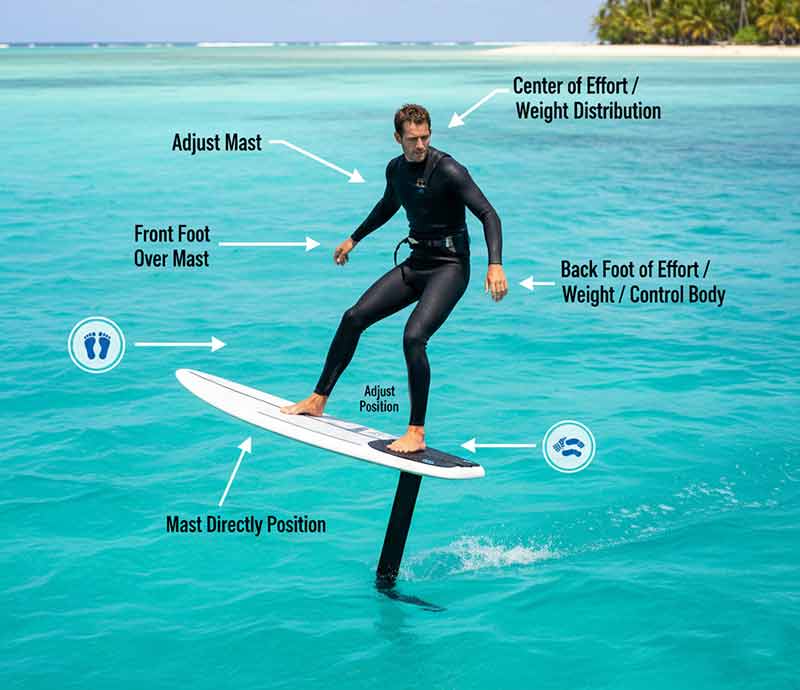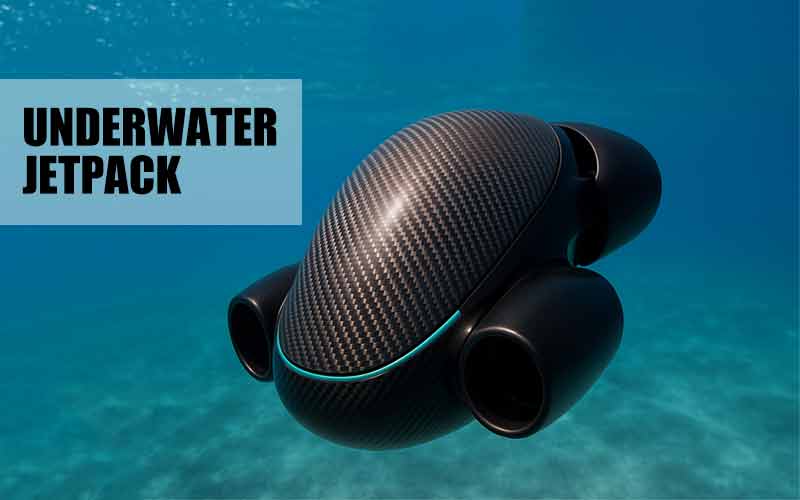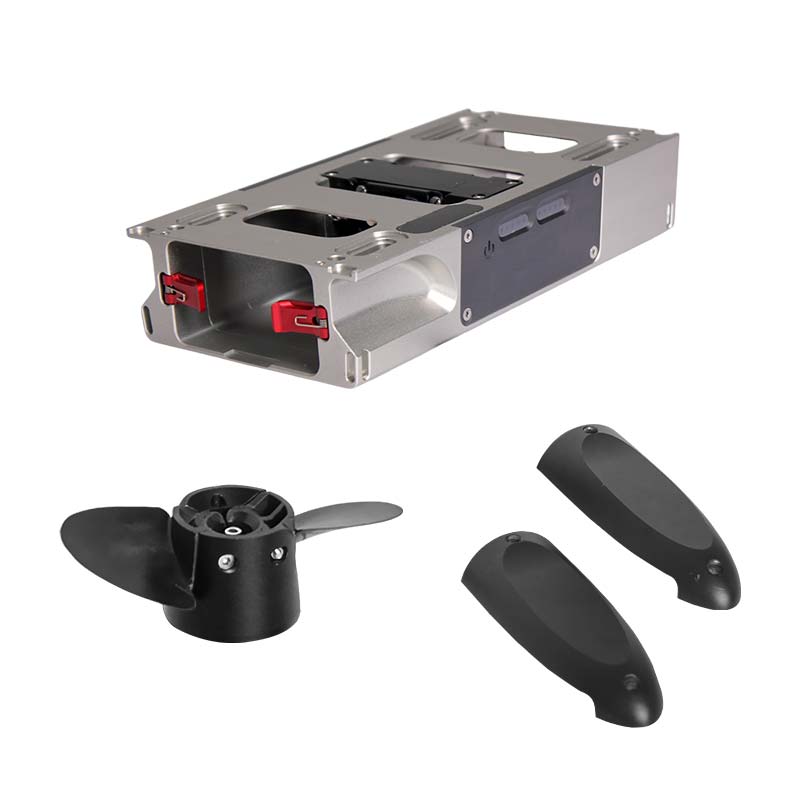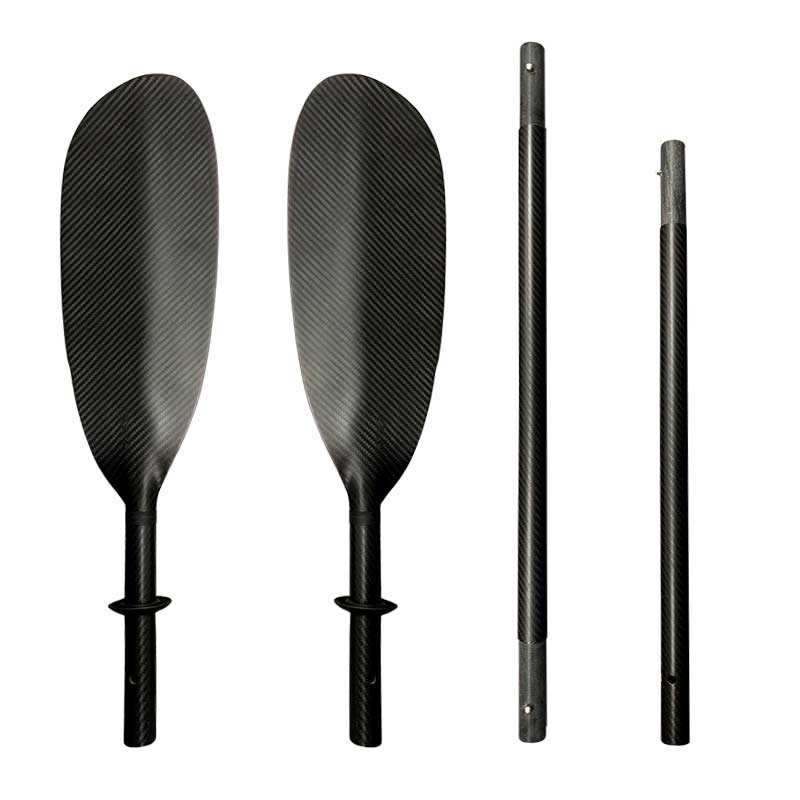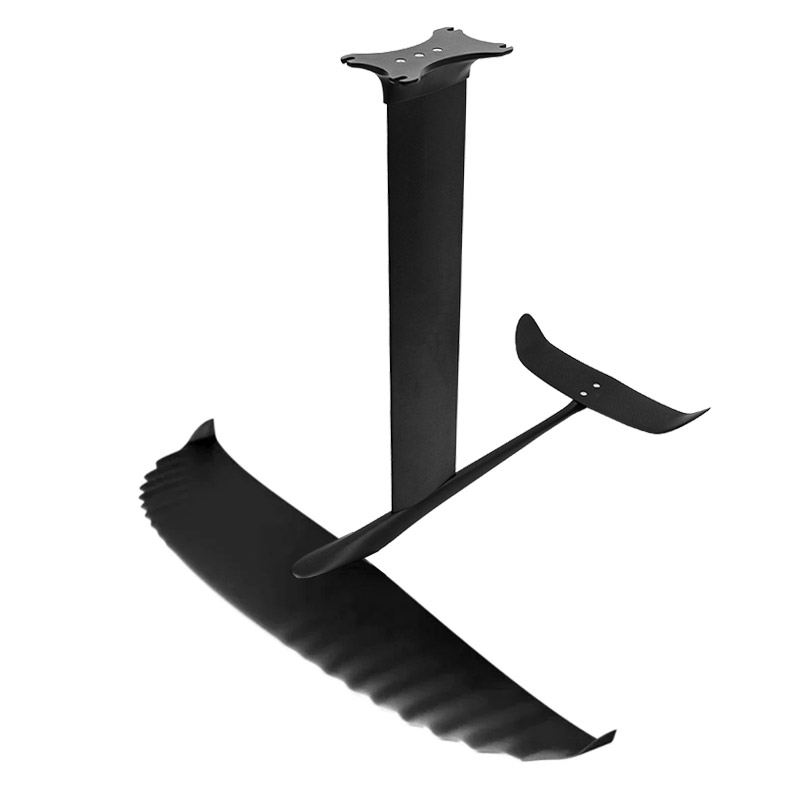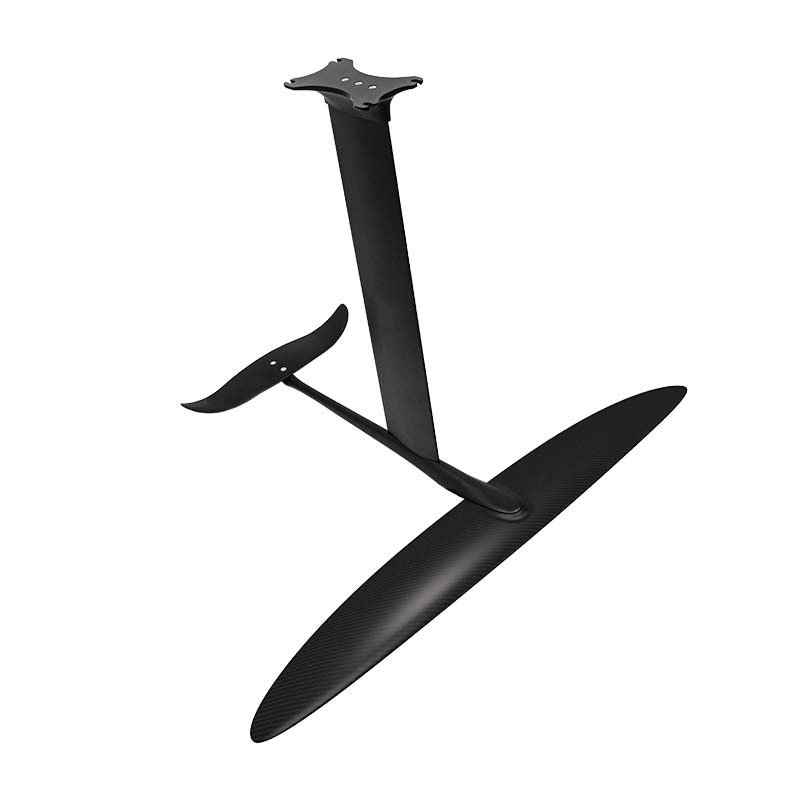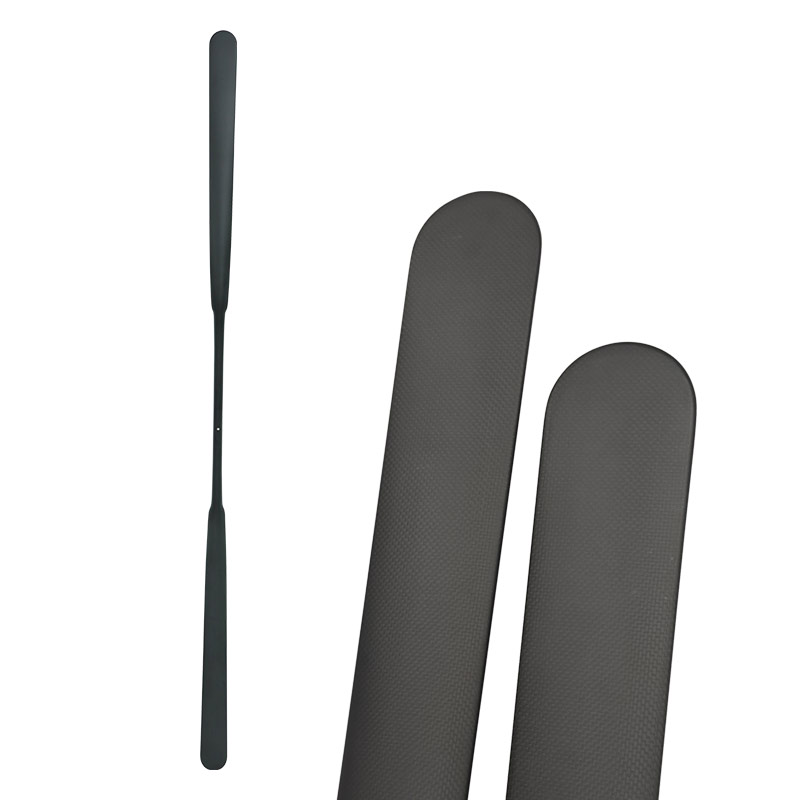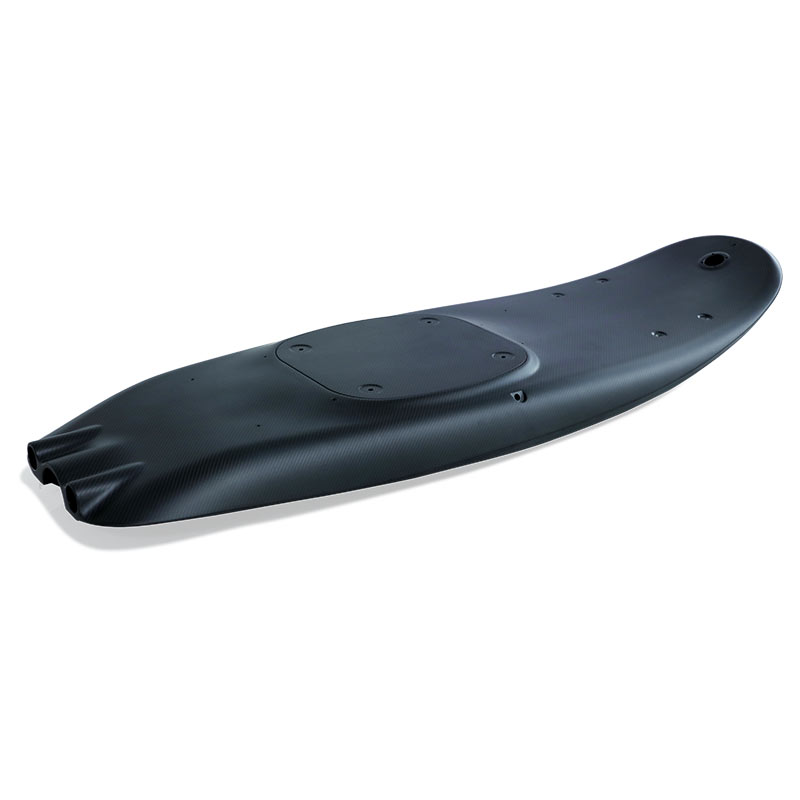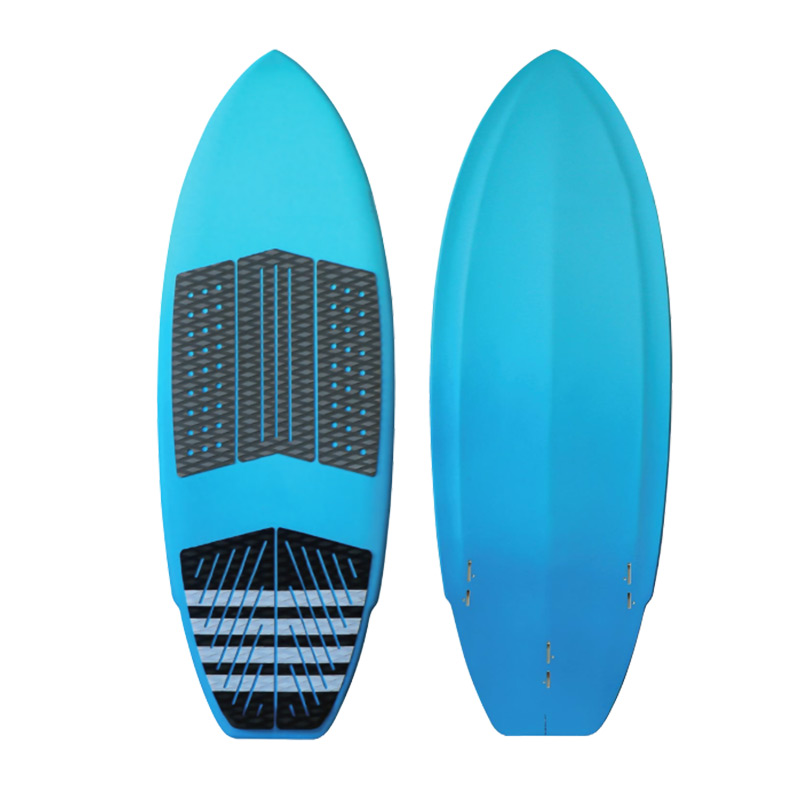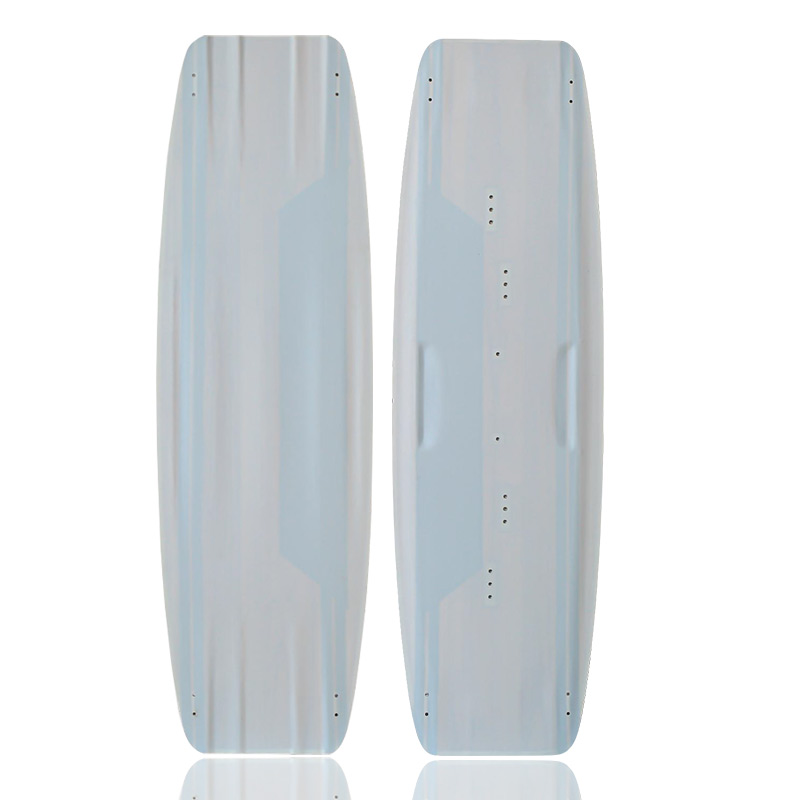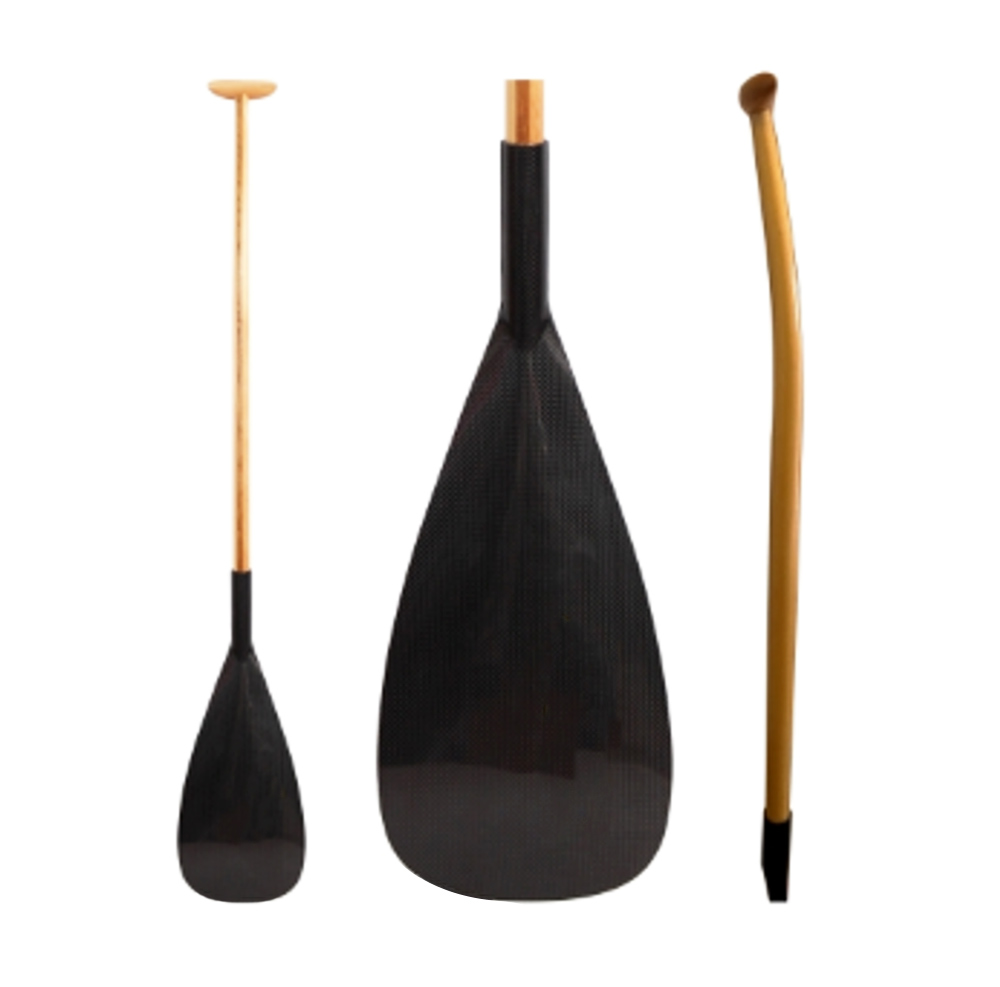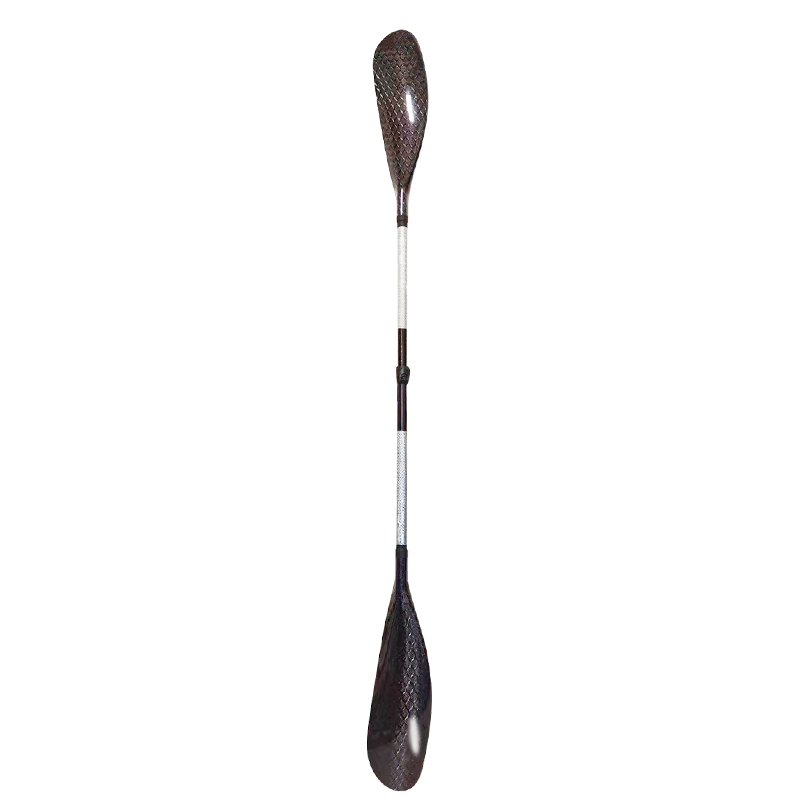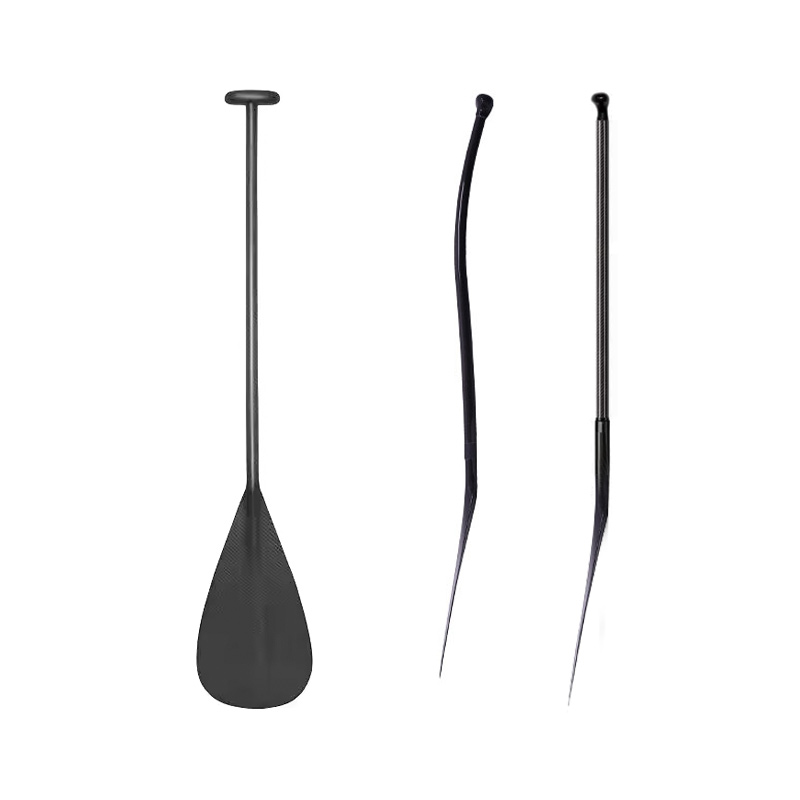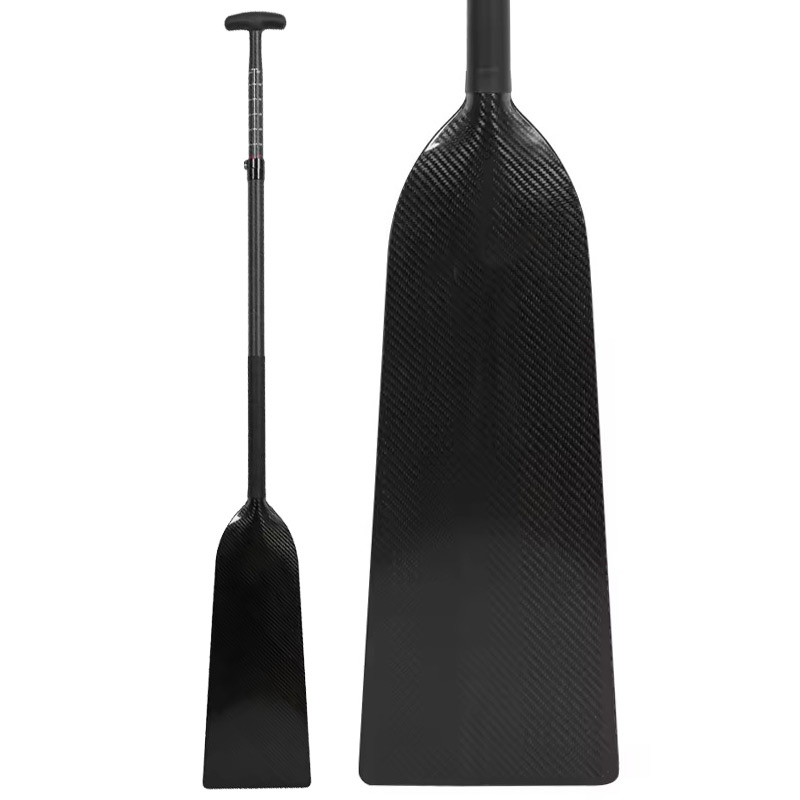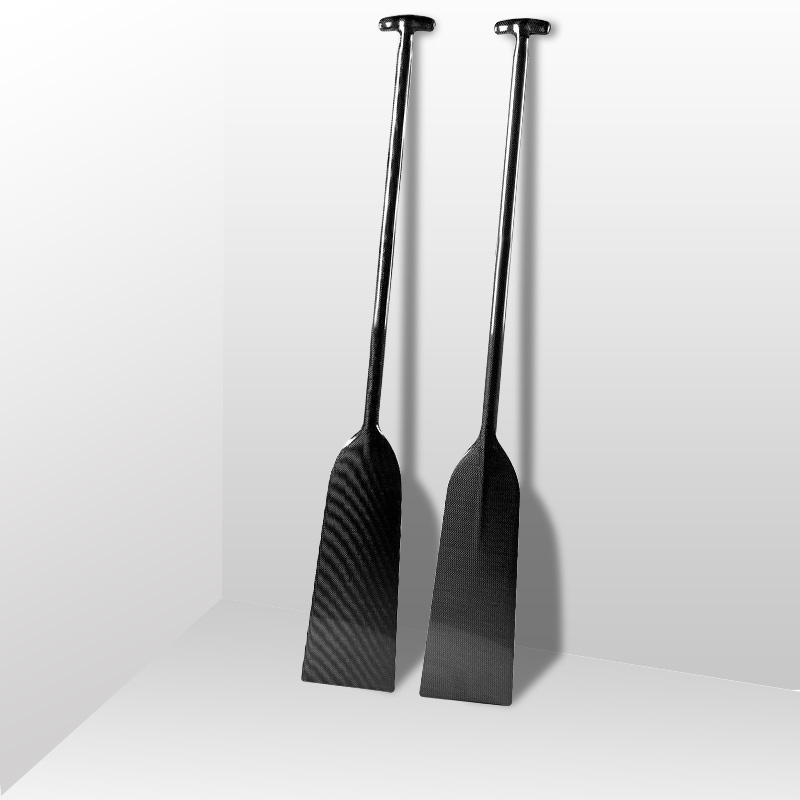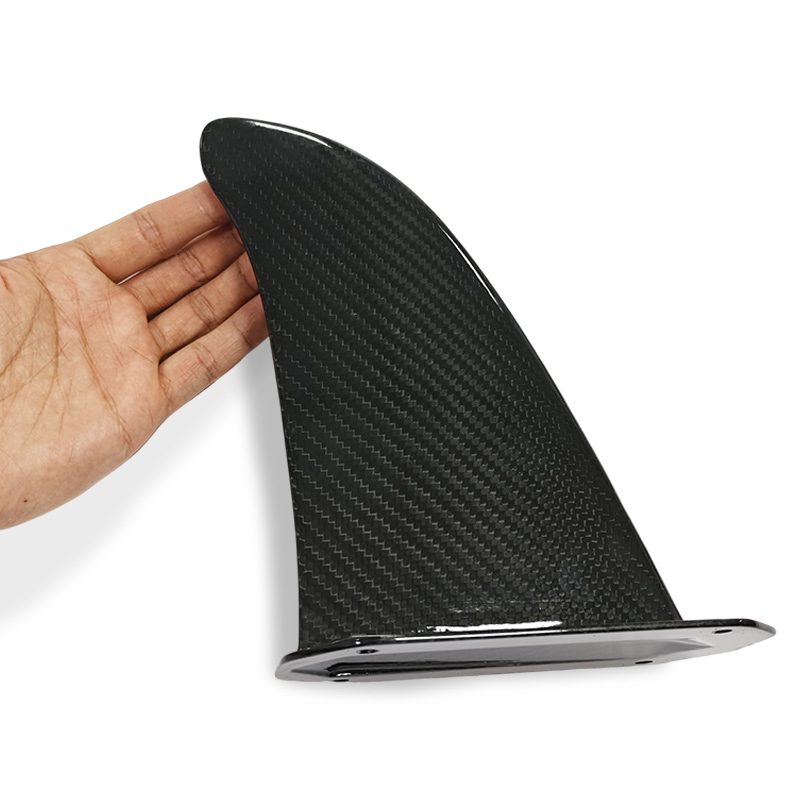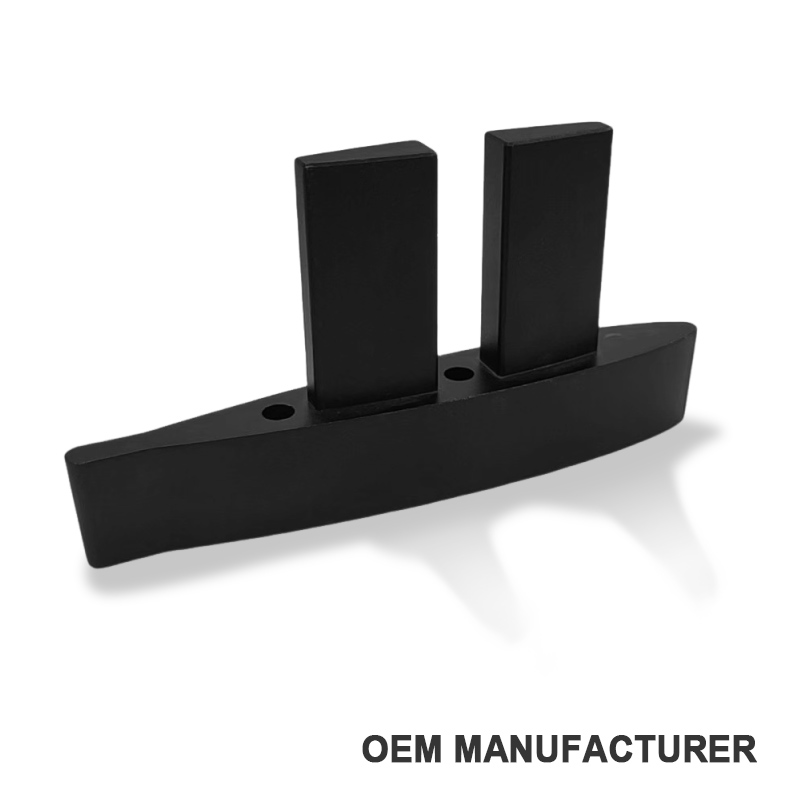This comprehensive Windsurf Tutorial delves into the art and science of sail tuning, focusing on achieving a balanced trim to unlock the full potential of your windsurfing rig. Whether you’re a beginner or an experienced rider, mastering sail tuning can transform your time on the water, making it more enjoyable and efficient.
Windsurfing is a thrilling water sport that combines elements of surfing and sailing, offering an exhilarating experience for enthusiasts. At the heart of an exceptional windsurfing session lies a well-tuned sail, which can significantly enhance performance, control, and speed. Now let us know about it. As a professional composite surfing product manufacturer, we have reach experience in production. If you want to customize the windsurf gear, such as the composite boom, windsurf mast, composite wind board, etc. WELCOME to contact us.
Understanding the Importance of Sail Tuning
Sail tuning is the process of adjusting the tension and shape of the sail to optimize its performance under varying wind conditions. A well-tuned sail allows for better control, increased speed, and improved stability, enabling riders to harness the wind effectively. The sail acts as the engine of the windsurfing rig, and its tuning directly impacts how the board responds to wind and water dynamics. Proper tuning ensures the sail “breathes” with the wind, maintaining a balance between power and responsiveness.
In this Windsurf Tutorial, we explore the key components of sail tuning: mast tension, boom tension, outhaul adjustments, and batten tension. Each element plays a critical role in shaping the sail’s profile, ensuring it performs optimally in light, medium, or strong winds. By following these steps, you can achieve a sail that feels alive, reactive, and tailored to your riding style.
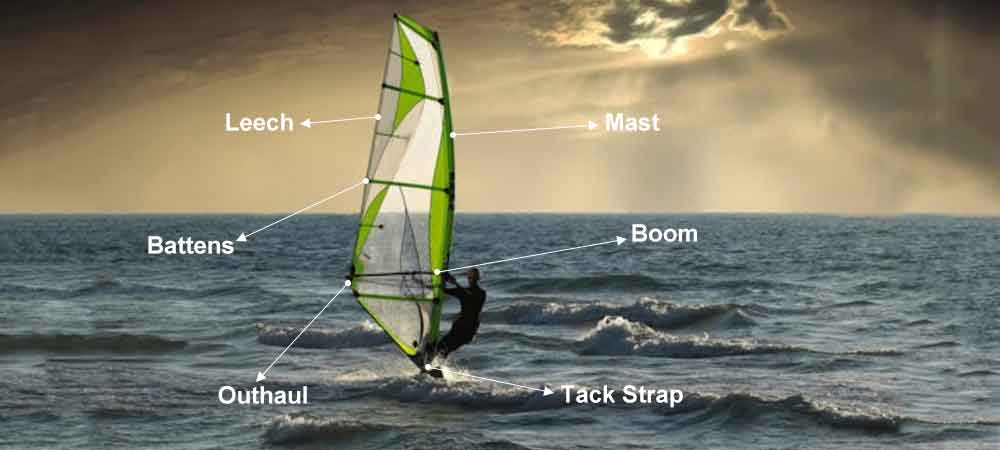
Step 1: Setting the Mast Tension
The foundation of sail tuning begins with the mast, which provides the structural backbone of the rig. Proper mast tension ensures the sail maintains a consistent curve, allowing it to respond dynamically to wind gusts and absorb choppy water conditions. Here’s how to set the mast tension effectively:
-
Downhauling the Sail: Start by downhauling the sail until you feel a natural, constant tension in the mast. This can be done by hand or with a simple loop mechanism. Instead of pulling with your arms, use your leg to apply steady pressure, allowing you to feel the mast’s response more accurately.
-
Finding the Natural Tension Point: As you downhaul, you’ll notice the mast begins to bend with a smooth, even curve. Continue until the tension feels consistent, then stop when it becomes slightly harder to pull. This is the “natural tension” point, where the mast has enough flexibility to breathe but not so much that it loses responsiveness.
-
Adding the Extra Centimeter: For optimal performance, add an extra centimeter or so of tension beyond the natural point. This additional pull enhances the mast’s reactivity, giving the sail a livelier feel and boosting acceleration. However, avoid over-tensioning, as this can “strangle” the mast, reducing its ability to flex naturally and stressing the rig.
This step ensures the sail maintains a balance between comfort and speed, allowing it to adapt to wind changes without becoming too stiff or unresponsive.
Step 2: Adjusting Boom Tension
The boom connects the sail to the rider, and its tension directly affects how power is distributed across the sail. Proper boom tension ensures the sail maintains an aerodynamic shape, reducing drag and enhancing control.
-
Releasing the Outhaul: Begin by fully releasing the outhaul rope to eliminate any tension. This creates a “zero point” where the sail is loose and ready for adjustment.
-
Light Wind Settings: In light wind conditions, pull the outhaul until you feel the first sign of tension, then stop. This minimal tension allows the sail to maintain a deep profile, maximizing power at low wind speeds. Typically, this results in about 4 cm of outhaul adjustment compared to the boom’s recommended length.
-
Medium Wind Adjustments: As wind strength increases, add an extra centimeter of outhaul tension. This flattens the back of the sail, reducing power in the rear to prevent overpowering and keep the pressure centered on the rider’s body.
-
Strong Wind Settings: In high winds, pull the outhaul to its maximum recommended length, flattening the sail further. This reduces drag and allows the sail to release excess wind from the top, enhancing stability and speed.
Adjustable outhauls are highly recommended, as they allow for on-the-water tweaks to match changing wind conditions, ensuring consistent performance throughout your session.
Step 3: Fine-Tuning Batten Tension
Battens are the flexible rods that shape the sail’s profile, and their tension plays a critical role in controlling the sail’s aerodynamics. Properly tuned battens enhance the sail’s ability to form an “S-shape” in strong winds, allowing wind to exit efficiently and maintain stability.
-
Releasing Batten Tension: Start by releasing all tension from the battens to create a baseline. You’ll notice wrinkles at the back of the sail, indicating a lack of tension.
-
Applying Tension: Gradually apply tension to each batten until the wrinkles at the back disappear. Stop as soon as you feel the tension increase significantly, as over-tensioning can close the sail, creating a “handbrake” effect that slows it down and makes it feel heavy.
-
Top Battens Adjustment: For the top two battens, apply slightly more tension to prevent wind from escaping through the top of the sail. This keeps the wind funneled through the sail’s main release point, typically around the third batten from the top.
-
Balancing Tension Across Battens: Ensure all battens have consistent tension to distribute wind pressure evenly across the sail. If one batten is too tight, it will catch more wind, disrupting the sail’s balance and reducing stability.
Regularly check batten tension, especially after extended use, as the top battens may loosen due to the sail’s reflex under wind pressure.
Step 4: Checking the Leech
The leech, or trailing edge of the sail, is critical for maintaining stability and speed. A properly tuned leech ensures the sail releases wind efficiently, reducing drag and enhancing performance.
-
Inspecting the Leech: Lift the sail from the boom and press down gently on the center of the battens. Observe the leech’s shape. It should appear straight and consistent, indicating even wind pressure distribution.
-
Adjusting for Consistency: If a batten protrudes above the leech line, it’s too tight—release some tension. If a batten sits below the line, add slight tension to bring it level. The goal is a smooth, continuous leech profile.
-
Ensuring S-Shaping: In strong winds, the sail should form an S-shape, particularly around the third batten, where the most wind release occurs. This shape shortens the sail’s effective area, making it faster and more stable by allowing wind to exit before reaching the end of the sail.

Additional Tips for Optimal Sail Tuning
-
Tack Strap Tension: The tack strap at the base of the sail should be tight enough to prevent wind from escaping the bottom but not so tight that it restricts the sail’s ability to open in stronger winds. In light winds, keep the tack strap slightly looser to maximize power; in strong winds, tighten it to maintain a straight profile.
-
Adapting to Sail Types: While the tuning principles apply to most sail types—wave, racing, freeride, or freerace—freestyle sails may have less loose leech due to their design. However, the core concepts of mast, boom, and batten tension remain consistent.
-
Regular Maintenance: Sails experience wear over time, which can affect tension settings. Periodically check and retune the top battens and tack strap to maintain optimal performance.
-
Feeling the Tension: Tuning is as much about feel as it is about precision. Develop a sense for the sail’s response by practicing these adjustments in different wind conditions.
Why Proper Sail Tuning Matters
A well-tuned sail transforms the windsurfing experience, offering several key benefits:
-
Enhanced Speed: Proper tension allows the sail to maintain an aerodynamic shape, reducing drag and maximizing acceleration.
-
Improved Stability: Even tension distribution ensures the sail remains balanced, preventing it from feeling heavy or unstable.
-
Greater Control: A tuned sail responds predictably to wind changes, giving riders confidence in challenging conditions.
-
Comfort: A sail that breathes and flexes naturally reduces fatigue, allowing for longer, more enjoyable sessions.
Incorrect tuning, such as overly tight battens or excessive mast tension, can lead to a heavy, unresponsive sail that hinders performance. By following this Windsurf Tutorial, you can avoid common mistakes and achieve a rig that feels light, fast, and responsive.
Optimized Windsurfing Tips
To ensure this Windsurf Tutorial reaches windsurfing enthusiasts searching for guidance, here are additional tips optimized for search engines:
-
Practice in Different Conditions: Test your tuning skills in light, medium, and strong winds to understand how adjustments affect performance. This hands-on experience is invaluable for mastering sail tuning.
-
Invest in Quality Equipment: High-quality sails and adjustable components make tuning easier and more effective. Look for sails designed for your riding style, whether it’s racing, freeride, or freestyle.
-
Join Online Communities: Engage with windsurfing forums and social media groups to share tuning tips and learn from others. These platforms often provide valuable insights and updates on the latest sail designs.
-
Watch Video Tutorials: Visual guides can complement written instructions, offering a clearer understanding of tuning techniques. Search for reputable windsurfing channels for demonstrations of mast, boom, and batten adjustments.

Windsurf Tutorial Conclusion
Mastering sail tuning is a game-changer for windsurfers seeking to elevate their performance on the water. This Windsurf Tutorial provides a step-by-step guide to achieving a well-balanced trim, from setting the mast tension to fine-tuning the battens and leeches. By understanding how each adjustment affects the sail’s shape and performance, you can unlock the full potential of your rig, whether you’re chasing speed, stability, or comfort. Practice these techniques, develop a feel for the sail’s response, and enjoy the unforgettable moments that come with a perfectly tuned windsurfing rig. For more windsurfing tips and equipment advice, explore online resources and connect with the windsurfing community to keep improving your skills.


